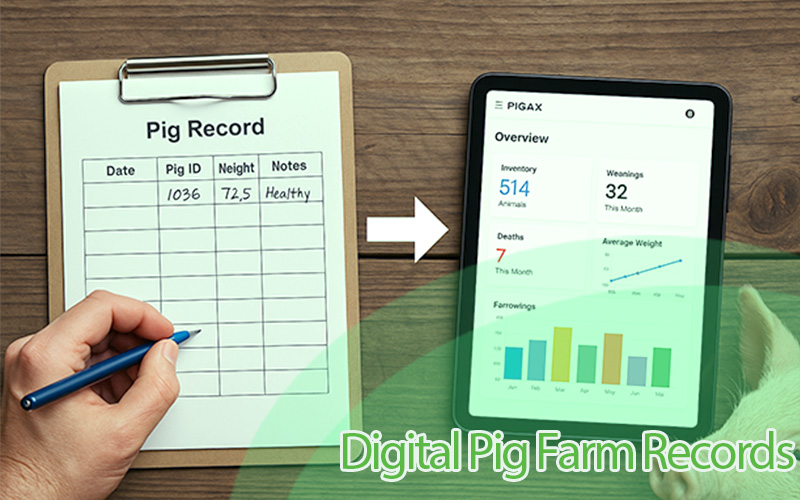Best Strategy for Numbering Pigs in a Large Pig Farm
Managing a large pig farm requires a systematic approach to ensure smooth operations and accurate record-keeping. One of the most essential but often overlooked aspects of pig farming is numbering your pigs. Proper identification allows for easy tracking of health records, breeding performance, and growth rates. It also minimizes confusion and simplifies decision-making, especially when managing hundreds or thousands of pigs. But how do you decide the best numbering system for your farm? Let’s dive into the strategies available and how you can implement them effectively.
Why Numbering Pigs is Crucial
Numbering pigs is not just about keeping them organized; it’s a cornerstone of efficient farm management. Proper numbering enables you to track each pig’s medical history, including vaccinations and treatments. This makes it easier to maintain herd health and identify problems early. Breeding records also benefit from numbering, as you can monitor genetic lines and ensure controlled breeding practices. Additionally, growth performance can be evaluated more accurately when each pig is uniquely identified, helping to optimize feed efficiency. Finally, a well-implemented numbering system streamlines operations during sales, culling, or transfers, saving time and reducing errors. Without a proper numbering system, managing these aspects becomes chaotic, especially as your farm grows.
Strategies for Numbering Pigs
There are several effective strategies for numbering pigs. Each method has its unique benefits and challenges, and the choice depends on your specific farm needs.
Ear Tagging
This is one of the most widely used methods for numbering pigs. It involves attaching a numbered plastic or metal tag to the pig’s ear. This approach is relatively inexpensive and easy to implement. Ear tags are visible from a distance, making it convenient to identify pigs in larger groups. They can also be customized with unique numbers or colors to represent specific groups or pens. For example, you might assign numbers 001 to 100 for pigs in Pen A and 101 to 200 for pigs in Pen B. However, ear tags can sometimes fall off or become illegible over time, and improper application may lead to infections. Regular checks and proper maintenance of the tags can mitigate these issues.
Ear Notching
Ear notching is another traditional method, which involves cutting small notches in specific areas of the pig’s ear. Each notch represents a number, and a combination of notches allows for unique identification. This method is permanent and eliminates the risk of losing tags. For instance, the right ear might indicate the litter number, while the left ear represents the individual pig within that litter. However, ear notching requires skilled application to avoid errors, and the notches may be difficult to read from a distance. This method works well for farms that prioritize permanence over ease of visual identification.
Tattooing
This involves marking the pig’s skin with a permanent number using a tattoo kit. Common areas for tattoos include the ear or flank. This method is durable and ideal for pigs that will be sold or transported, as tattoos are often accepted internationally. For example, a pig identified as “L15-08” might belong to Litter 15 and be the eighth pig in that group. While tattooing provides permanent identification, it can be time-consuming to apply and requires close inspection to read the numbers. It is best suited for farms needing detailed, long-term tracking.
Spraying
Spray marking is a temporary method that uses paint or markers to number pigs. This approach is quick and easy, making it useful for short-term identification needs, such as sorting pigs for treatment or sales. For example, pigs in Pen A could be marked as “A1, A2, A3,” and so on. However, spray marks fade quickly and require reapplication. This method is more suited for temporary tracking rather than permanent identification.
Electronic Identification (EID)
This is an advanced method that uses microchips implanted in the pig’s ear or under the skin. This technology allows for automated data collection using RFID scanners. EID provides detailed, real-time data and minimizes human error in record-keeping. For instance, each pig’s unique EID could link to a database containing information about its weight, vaccinations, and breeding details. While EID offers unparalleled accuracy and efficiency, it requires a significant initial investment in equipment and technology. It is an excellent option for large-scale operations where precision and automation are critical.
Choosing the Best Approach for Your Farm
The best numbering strategy for your farm depends on various factors, including the size of your farm, budget, and management goals. For smaller farms, ear tagging or ear notching may be sufficient to meet identification needs. These methods are cost-effective and relatively easy to implement. For larger farms, electronic identification may be a better choice due to its ability to handle complex data and provide automation.
Budget is another important consideration. Methods like ear tagging and spray marking are affordable and effective for smaller operations. On the other hand, EID requires a higher upfront cost but offers long-term benefits, especially for farms looking to scale up. Labor availability also plays a role. Tattooing and ear notching require skilled labor, while ear tagging and spray marking can be done more quickly by less experienced staff.
Finally, consider your record-keeping needs. If detailed tracking and automated systems are essential for your operations, EID or a well-organized ear tag system will serve you best. On the other hand, if your focus is on simplicity and low-cost solutions, ear tags or notching may be the way to go.
Pig Numbering with Pigax
While you number pigs on the physical, you must be aware however that this numbering must also be registered in the farm records fo easy search and identification. You can do this with the best pig management software like Pigax.
Pigax allows you number your pigs with convenience. There is a default format for numbering pigs on the software, yet it offers you opportunbity to edit numbers based on your preference.
By selecting the right strategy for your farm, you can simplify record-keeping, improve health management, and enhance productivity. Whether you choose ear tags for their simplicity or electronic identification for its precision, the key is to implement a system that aligns with your farm’s needs and resources. Start small if necessary, and scale up as your farm grows—your pigs and your business will thank you for it!




